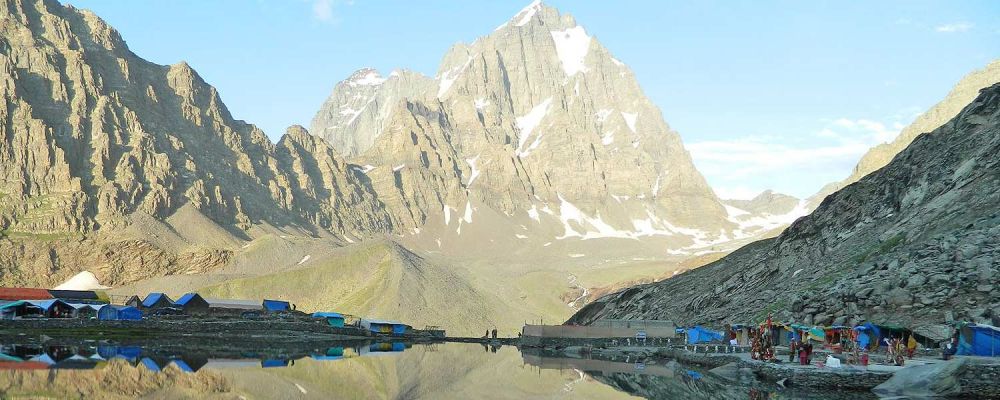

The enchanting Manimahesh Lake, nestled in the Pir Panjal Range of the Himalayas, is not just a natural wonder but also a spiritual beacon in Chamba, Himachal Pradesh, India. Sitting at an altitude of about 4,080 meters, the lake is considered sacred to Lord Shiva and has been a significant pilgrimage site for centuries.
The history of tourism in Manimahesh is intrinsically linked to religion and spirituality. The name 'Manimahesh' signifies a jewel (Mani) on Lord Shiva's crown (Mahesh). According to local legend, it is believed that Lord Shiva himself created this high altitude lake and is one of the abodes of the Hindu deity.
The historical significance of the lake is highlighted during the annual 'Manimahesh Yatra,' which holds immense importance among devotees. The Yatra coincides with the festival of Janmashtami and Radhashtami, usually taking place in the month of August or September. It begins from the Lakshminarayan Temple in Chamba and culminates at the lake, with pilgrims trekking for about 13-14 km from the base camp at Hadsar.
The trek to Manimahesh is considered a challenging one, attracting not only devotees but also adventure seekers and nature lovers. Over the years, this trek has gained popularity, contributing significantly to the local economy and tourism.
Latest tourism trends indicate a rise in eco-friendly and sustainable travel practices in the area. There has been an upsurge in responsible trekking endeavors where trekkers are made aware of the environmental sensitivities of the region. Locally operated homestays and guesthouses are being promoted to provide authentic cultural experiences while ensuring economic benefits to the native communities.
In recent times, off-season tourism has also been encouraged to reduce the impact on the Manimahesh Lake ecosystem from the massive influx of pilgrims during the yatra. The authorities are implementing strict regulations to control littering and noise pollution, which has been a concern in the past.
Those wishing to visit Manimahesh Lake should be prepared for high-altitude travel, which includes acclimatizing to prevent altitude sickness. The best time to embark on this pilgrimage is during the Manimahesh Yatra when the pathways and the rest houses are open for the devotees. For the rest of the year, the weather conditions can be harsh and unpredictable, making it less accessible for tourism.
Connectivity to Manimahesh is primarily through Chamba, which is well-connected by road. The nearest airport is in Dharamshala, and the closest railway station is in Pathankot, Punjab. From these points, one can hire taxis or take buses to reach Bharmour or Hadsar, from where the trek to Manimahesh begins.
Visitors are advised to be respectful of the religious customs and environmental sanctity of the place. The use of plastic is banned, and all waste must be carried back and disposed of properly.